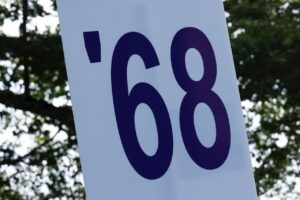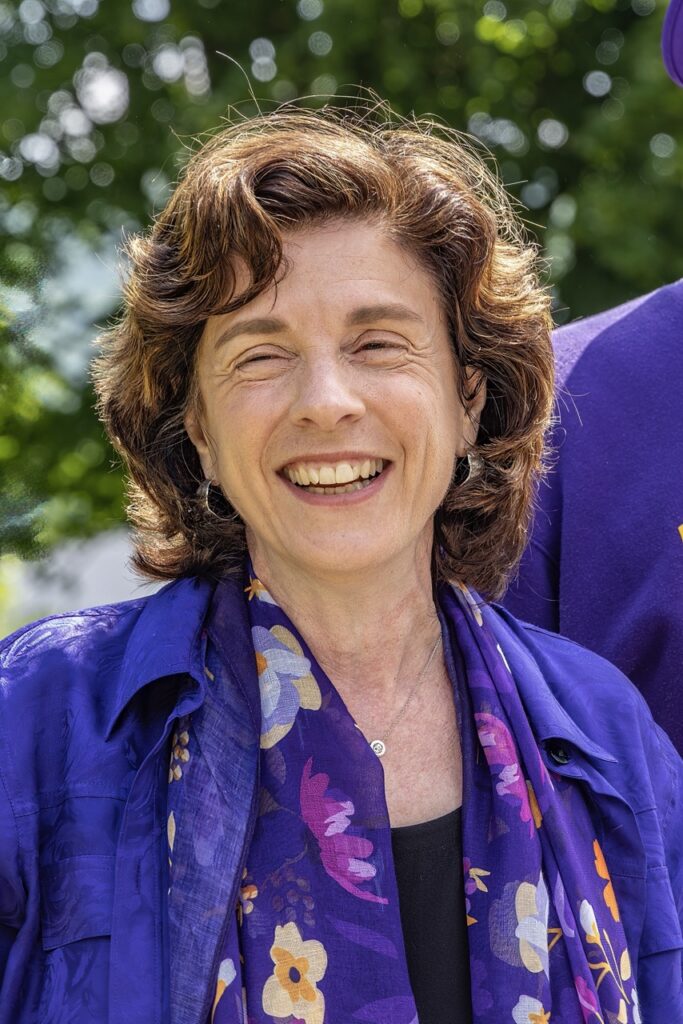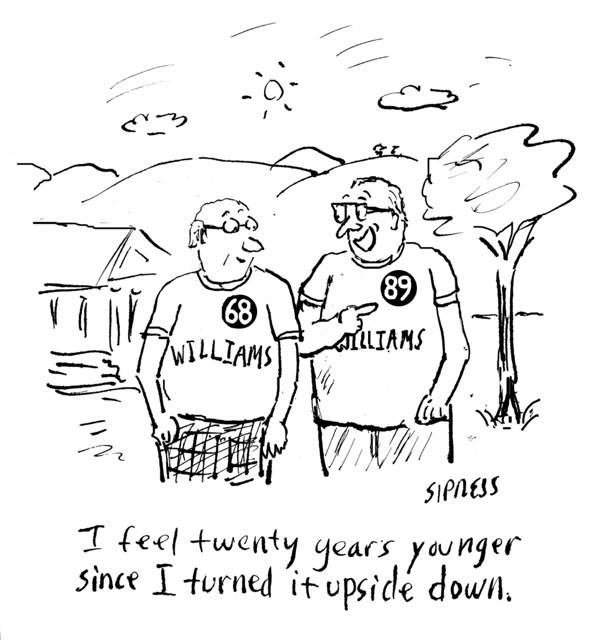At the corner of Route 2 and 7, the Class of 1968 extended the frontier of reunions and found that the past may even have a future.
And no question about it, the women outdid the men during the reunion’s audience-participation sessions.
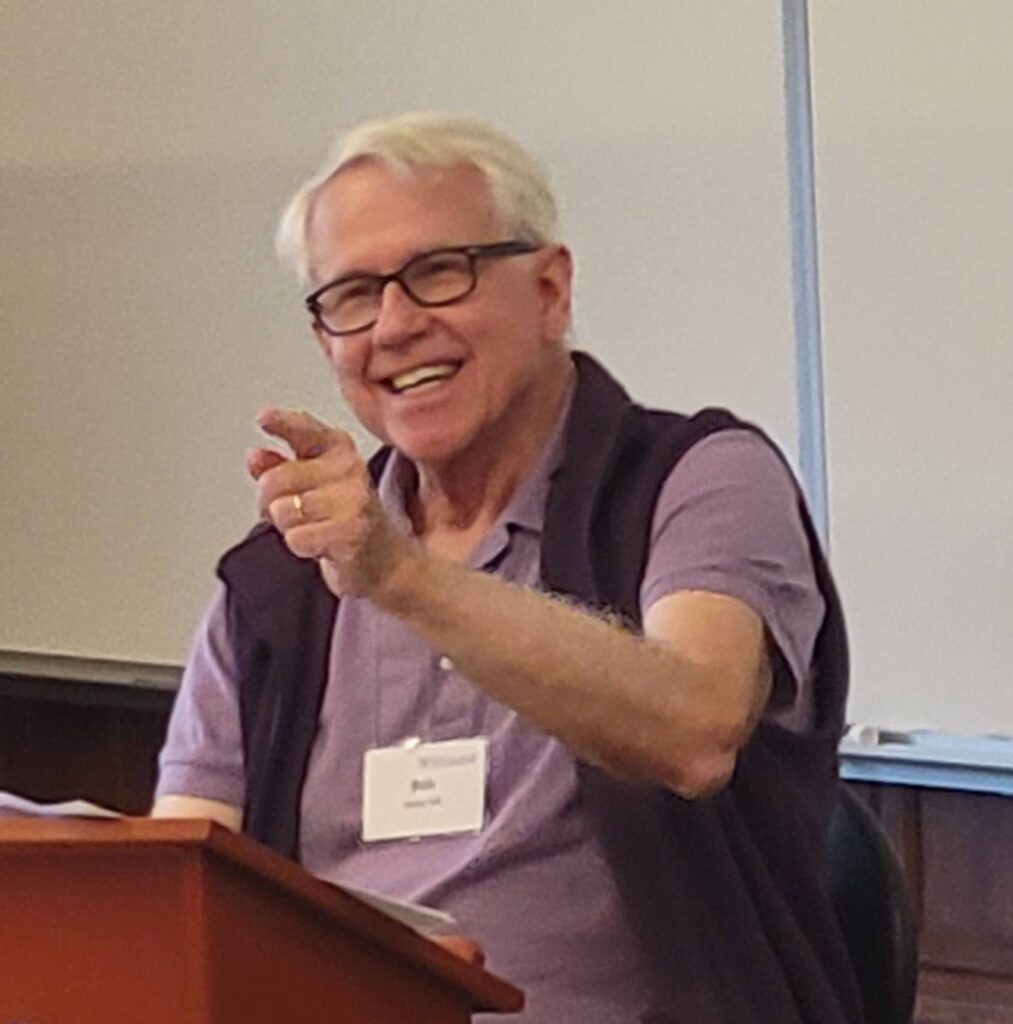
For example, Bob Heiss, channeling Bud Collyer, led off on Friday morning, June 9, with a rousing full-tilt “Advertising 101: The Early TV years” session where he asked us to call out the product linked to a slogan or jingle:
Plop! Plop! Fizz! Fizz!
Brusha, brusha, brusha
Munch, munch, munch a bunch of [Fill in the blank]
The women aced the answers; the men, not so much.
The next morning, by coincidence, deejay Howard Steinberg staged his Rock ‘n’ Roll Revue on the birthday of Shirley Owens of the Shirelles, who performed at Williams in 1965. Howard sampled a pantheon of top hits from the Fifties and early Sixties. From the first notes, the women out-ID’ed the men for titles, lyrics and groups.
Howard asked the crowd, “What was the advantage of Surf City?”
“Two girls for every guy,” Linda Zaro instantly replied, deadpan. Her answer summed up our clueless male teenhood.
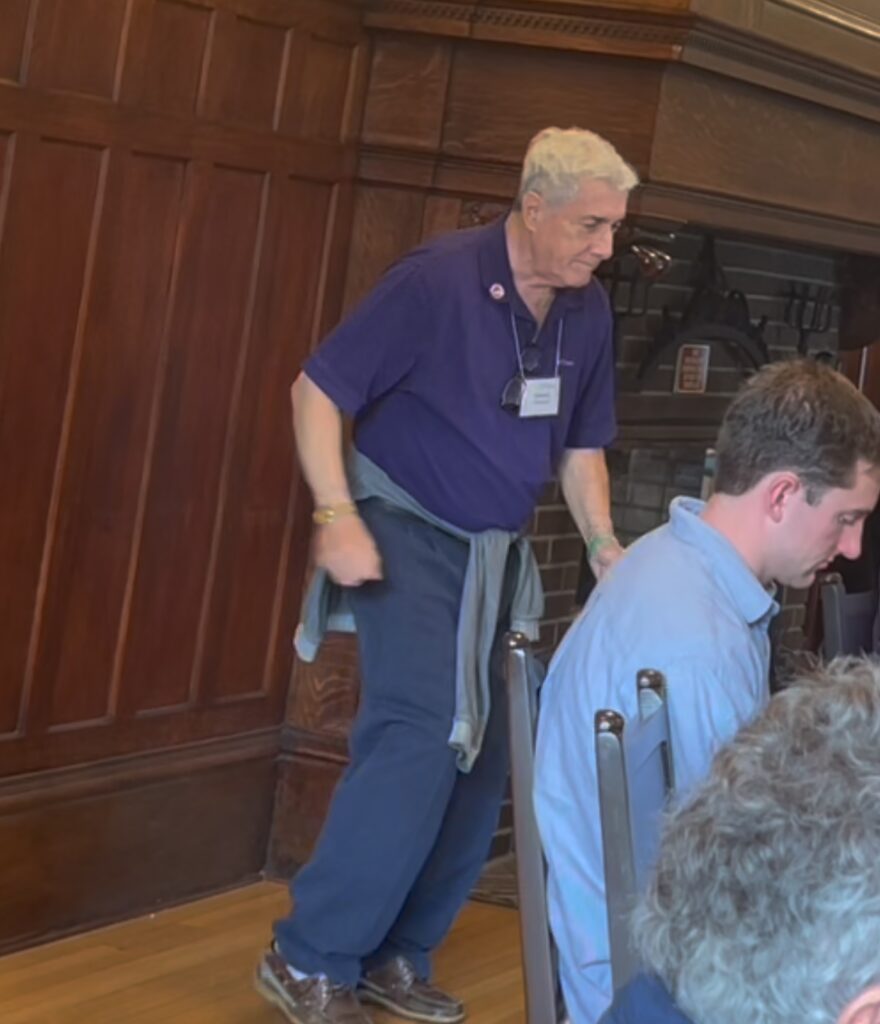
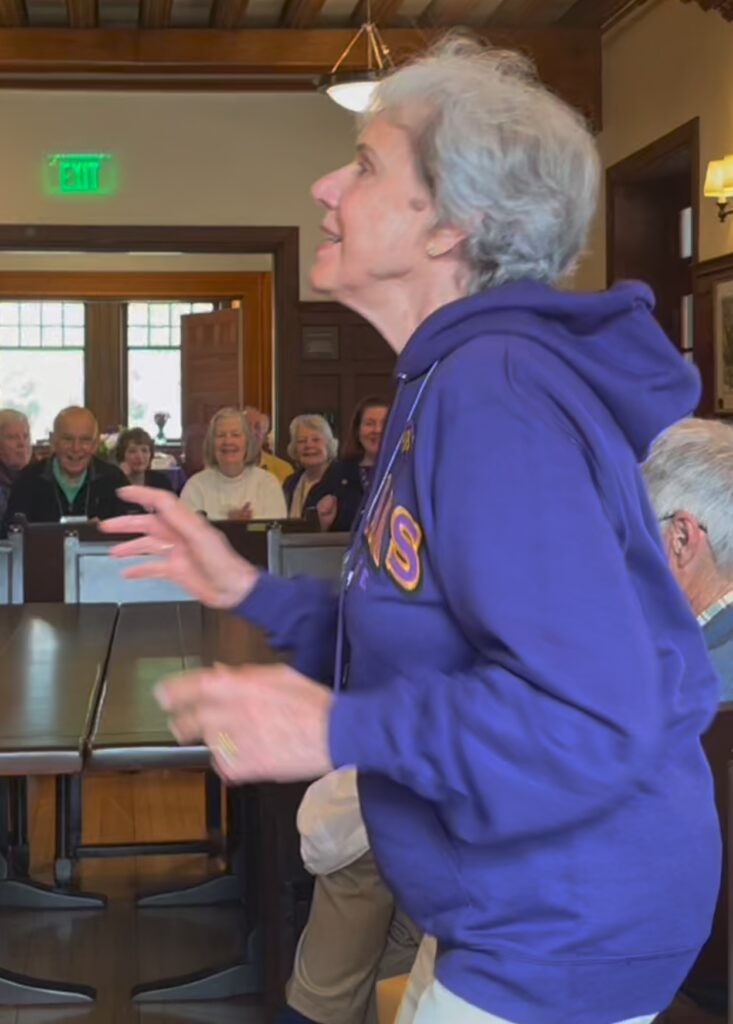
The cluelessness has continued. Howard lamented that Connie Francis, who sang “Who’s Sorry Now?,” “Lipstick on Your Collar” and other Fifties classics, isn’t in the Rock & Roll Hall of Fame.
A personal footnote to rock history: When Howard played “Denise,” by Randy and the Rainbows (1963), John Oppenheimer said, “I grew up in Woodmere, L.I. Our neighbors were the housing moguls, the LeFraks.” Randy and the Rainbows performed at Denise LeFrak’s Sweet 16 Party.”
Howard played “The Stroll,” by the Diamonds (1957), stood up from the console — and strolled. For “The Mashed Potatoes,” by Dee Dee Sharp (1962), he mashed potatoes. Nobody else stood up and danced during the session, except for Margaret Bielski, spouse of Bob Macartney, who couldn’t resist “The Watusi,” by the Vibrations (1961).
The hits started happening even before our formal reunion program began. On Thursday, Mark Donavan, at Taconic Golf Club with Penny and Mike Herlihy and Lowell Davis, hit a hole-in-one on the 141-yard fifth hole “with an 8-iron, the same club I’ve been using on that hole for 60 years,” Mark said. “After saying it would be close, I didn’t see it go in. My vision isn’t that good. None of us was sure it went in. Such is senior golf.” (Trav Auburn coordinated the 1968 golf outings.)
The reunion revelation, both Friday and Saturday morning, was the Lowell Davis Pick-up Pickleball Academy, a first for the sport at a Williams reunion. Lowell, our player-coach-apostle, assisted by Penny Herlihy, introduced 20 of our classmates to the game.
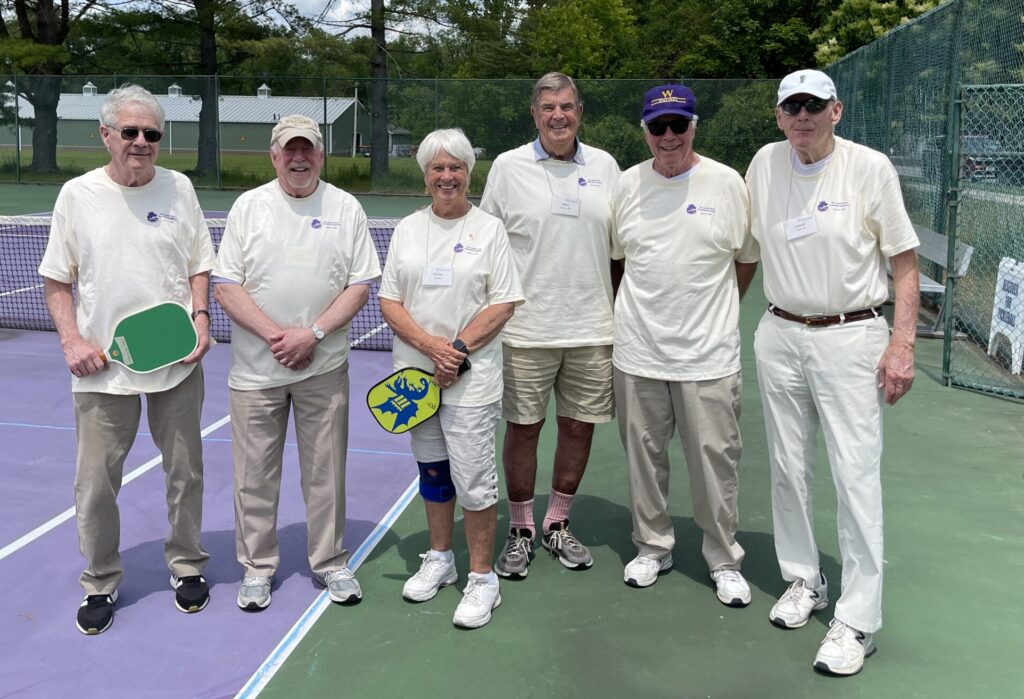
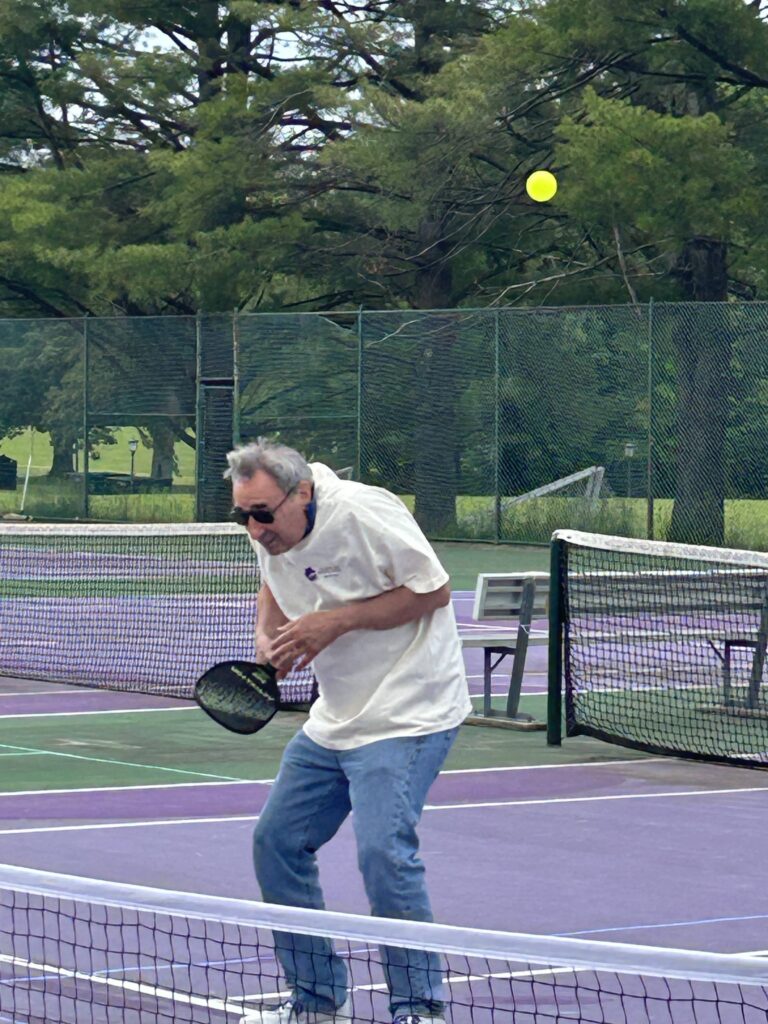
Art is a natural resource in Williamstown. On Friday, Pamela Franks, Class of 1956 Director of the Williams College Museum of Art, gave us an exclusive lookaround. WCMA celebrates its centennial in 2026 and plans are underway to build a new museum on the corner of Route 2 and 7, the site of the old Fort Hoosac/Kappa Alpha house.
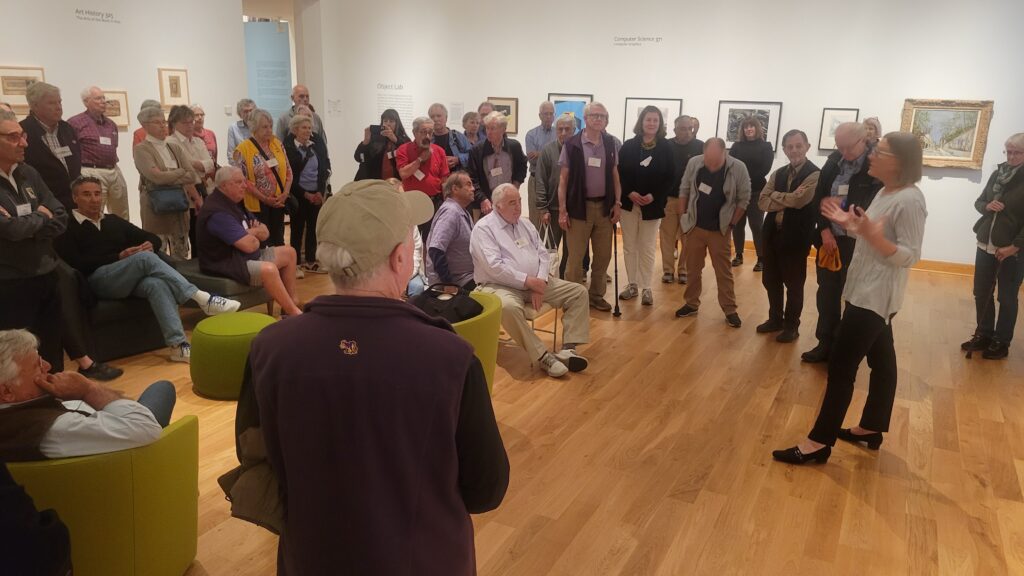
“How can you presume to compete with the Clark and MassMoCA?” somebody asked.
“We won’t compete, we’ll collaborate and complement one another,” Pam replied. “Our primary mission is to educate and we can leverage our neighbors’ collections for everybody’s benefit.” (The Williams Art Mafia can help.)
WCMA is bursting at the seams with some 14,000 objects on hand, from prehistory to the present, and from all around the world — a broader scope than the Clark and MassMoCA. WCMA’s cross-disciplinary programs already embody its collaborative spirit.
Pam and two associates divided up our group to lead separate tours. Who knew that WCMA could strike up a conversation between a Jim Dine painted door and a colonial-era ladder-back chair?
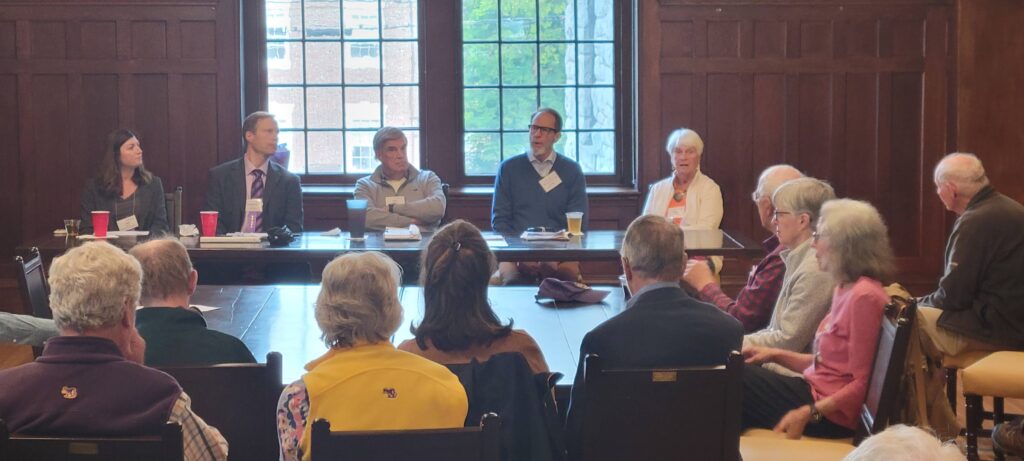
On Friday we kept learning at the double panel session staged under the oak beams of the reception room at headquarters, with Don Kjelleren, executive director of the ’68 Center for Career Exploration, and Tom Powers, director of the Center for Development Economics. Our 50th reunion gift helped underwrite the Center (and Kjelleren’s visionary outline of career-related programs there emphatically proved that the money was well spent). And Powers, who manages a master’s-degree economics program for rising leaders in developing nations, has worked closely with Penny and Mike Herlihy, who have longstanding ties to Rwanda.
A weekend highlight not on our class schedule: On Friday, Paul Neely hosted the Ephraim Williams Society breakfast at the Williams Inn. Paul, outgoing chair of the legacy society after five years, spoke at the breakfast along with Maud Mandel. Several classmates attended.
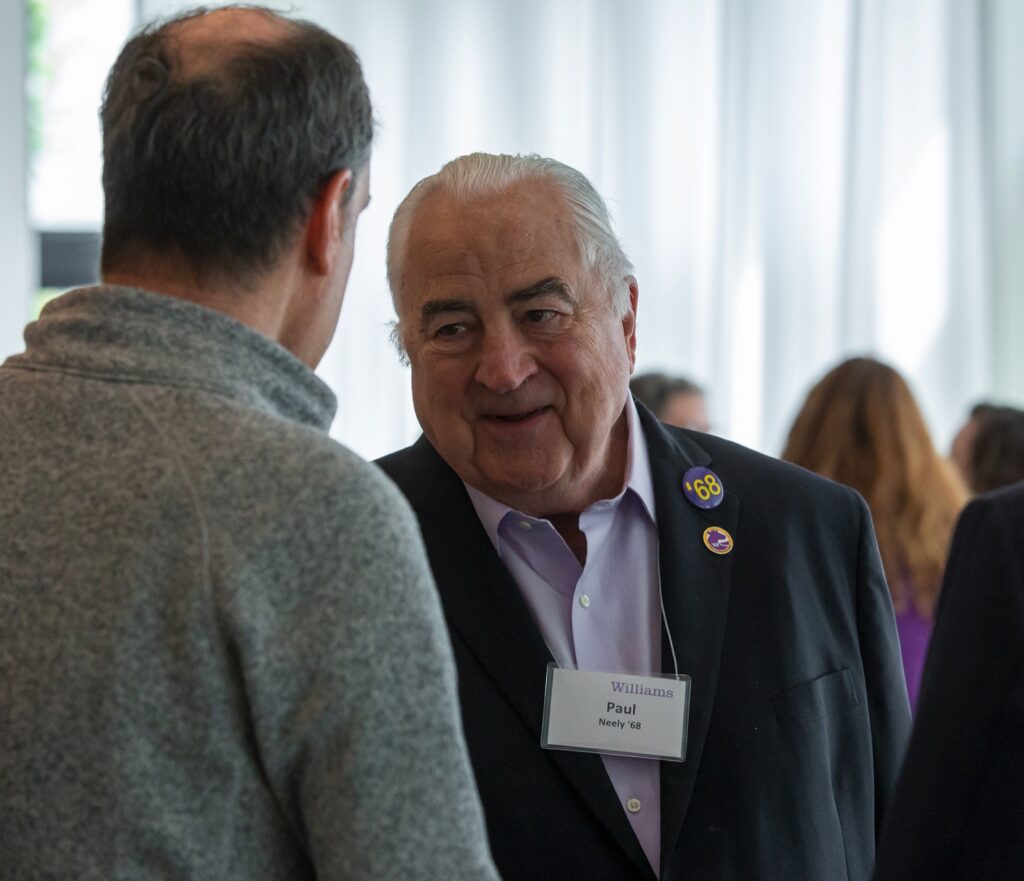
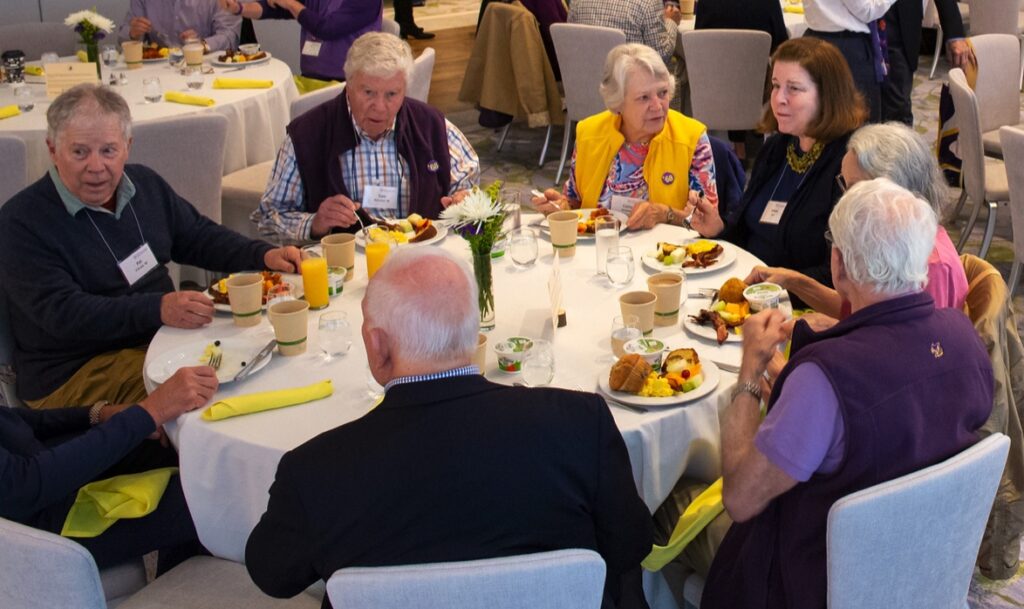
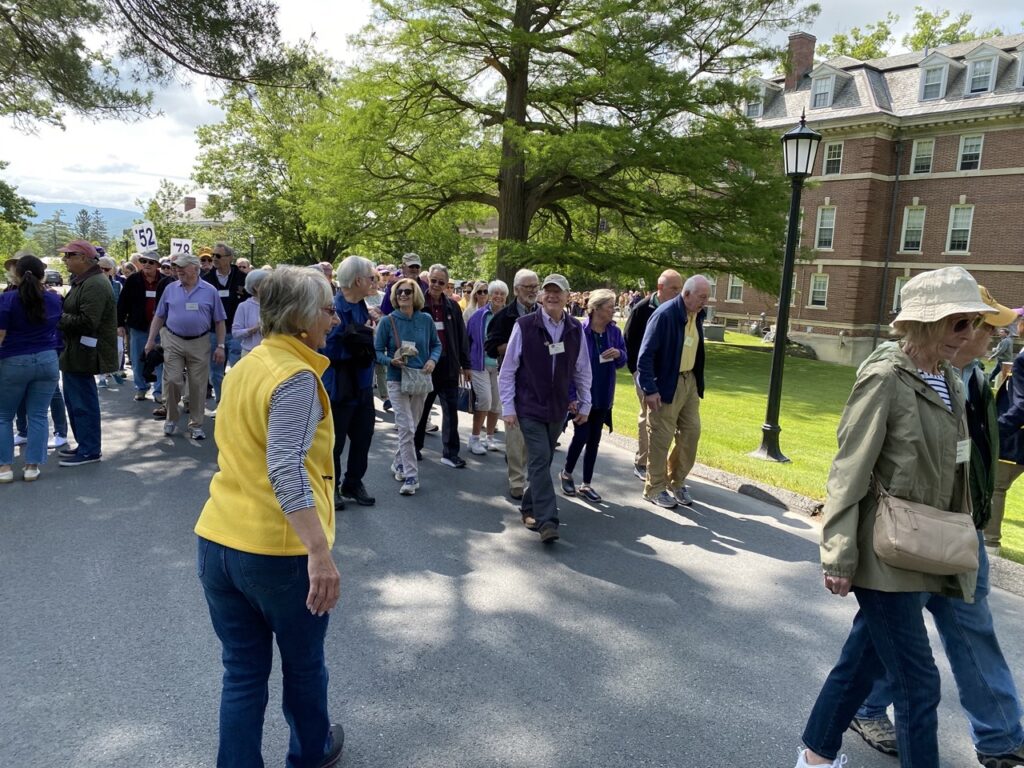
On Saturday morning, many of us gathered for the alumni parade — wearing our new enamel class pins (courtesy of Mike Herlihy) and swag from previous reunions. But we were upstaged by a show-off from the class of 1952 who traveled the parade route on foot and got the most applause.
Afterward, at the Alumni Society gathering, Larry Levien hoisted the John Sawyer trophy presented to the class, with his name inscribed as class agent, in a category for beyond-50th-reunioners, for the scale of our donations to the Alumni Fund.
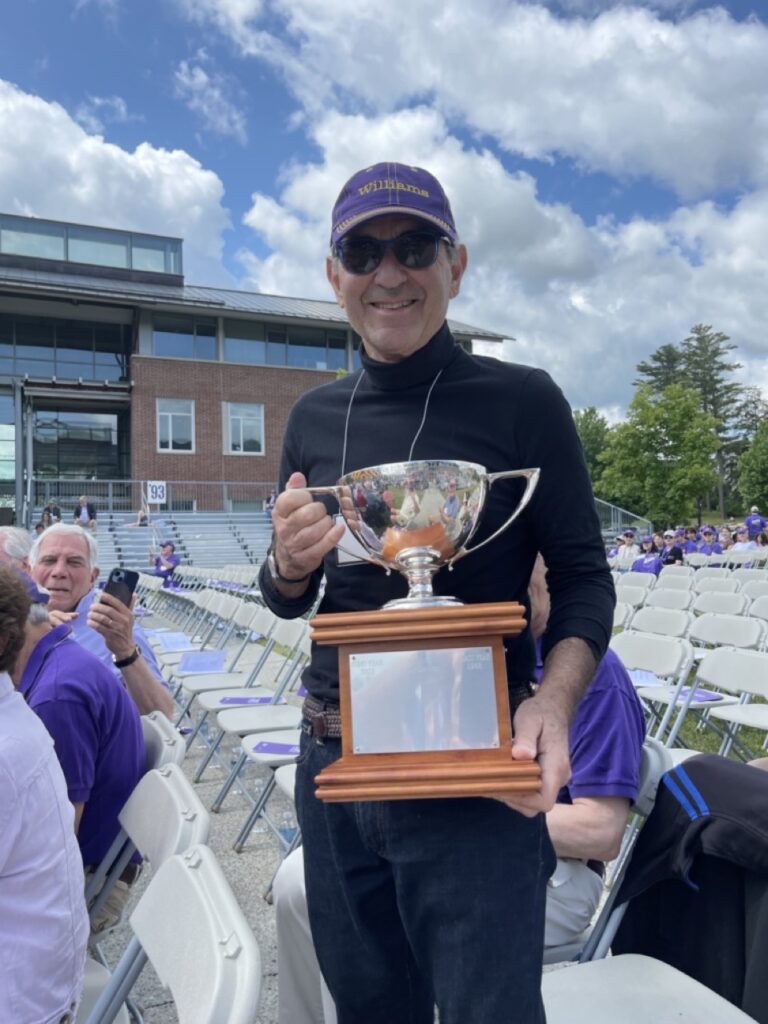
At our class luncheon, back at headquarters, Maud Mandel joined us and happily mingled.
Later that afternoon the author panel set us up for happy hour. As emcee, I detected a valedictory theme that connected the authors to classmates — a kind of salute to our life and times.
The contributors: Peter Abrahams had me signing up for the Romanian scam in his novel, “Mrs. Plansky’s Revenge.” Alexander Caskey (with credit to spouse Carmen Lozano) gave us a TED-talk-worthy take on A.I. and Aristotle. John Fulkerson invoked vineyard veritas. Geoff Connor read tellingly from a screenplay about the origins of Nazism.
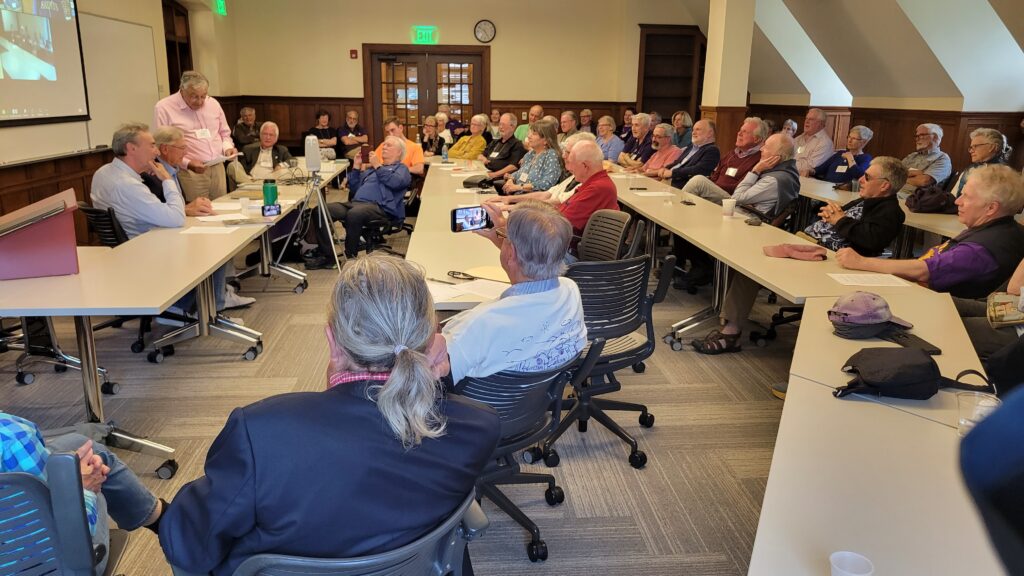
And Robert Herzog enlisted Arthur Cambouris and David Earle to enact a scene from his play about a reunion luncheon of friends born in 1946, with Arthur as waiter, towel on arm, reciting the menu:
“For dessert, we have a two-by-two tasting of granité of lavender infused litchi deduction under the protection of unstressed Molokai pineapple, and evidence of Managuan cocoa over Pyrenees rainwater baubles.”
Tony Kronman and David Sipress beamed in to read from their new books: Tony from “After Disbelief: On Disenchantment, Disappointment, Eternity and Joy,” and David from “What’s So Funny?: A Cartoonist’s Memoir.”
Caroline Boynton, Rosanne Olson and Ted McMahon prayed us out with Rosanne’s song “Crossing Over” and a “Four Strong Winds,” with a nod to the Ian and Sylvia concert at Williams in fall 1965:
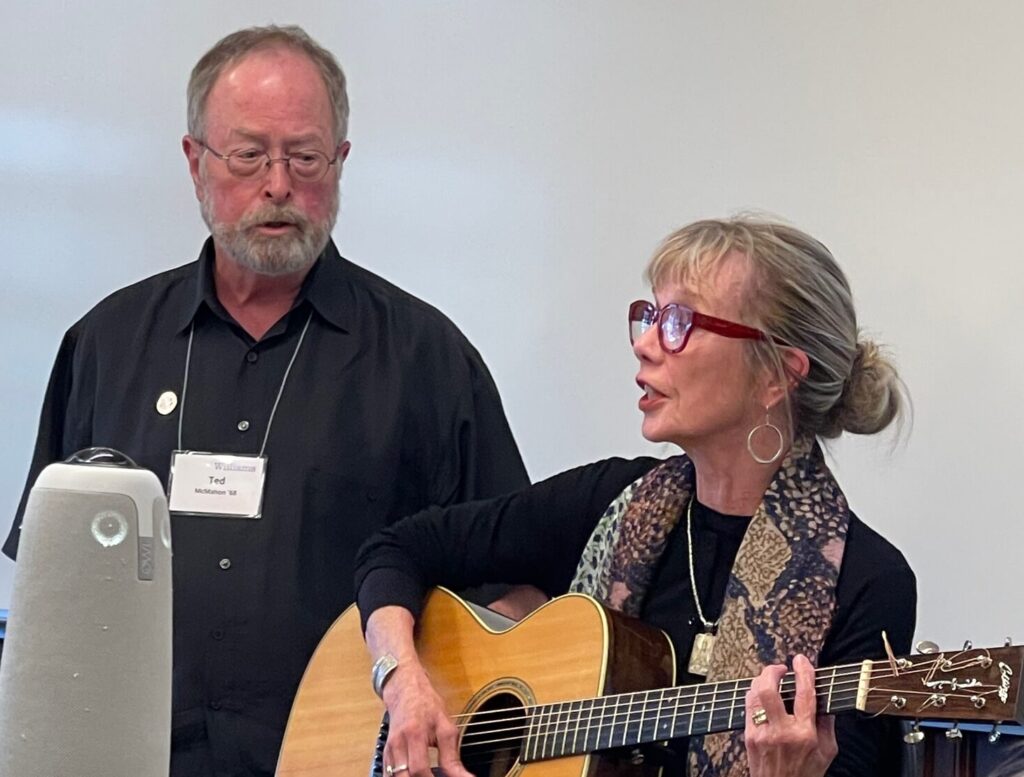
As Tony had read, “The longing for eternity needs to be put back at the center of human consciousness, where it has always been, and still belongs today.”
The Saturday farewell dinner was bittersweet. Kudos to Don McGill for the elegant catering, though surgery prevented him from attending the reunion. Bob Heiss called the class meeting to order and, after reporting Mark Donovan’s hole in one, recognized past class presidents, asking Moira Dougherty to stand in for past president Kevin Dougherty. Bob thanked all who had helped realize this reunion, five years in the making.
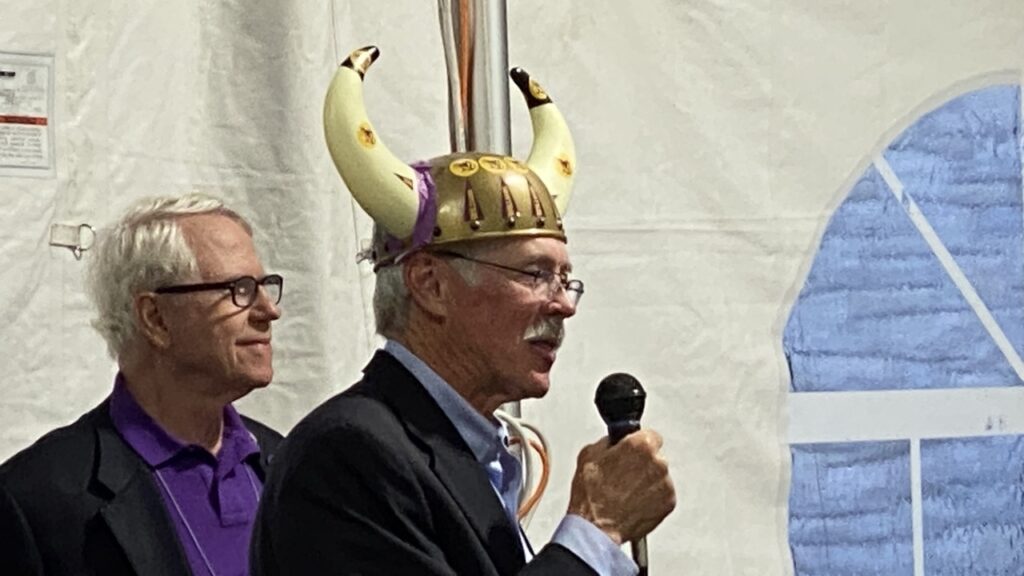
Mark Donavan asked Bob Scott to announce the proposed slate of new officers recommended by the nominating committee. Mark and his team won election — and, as a symbol of his continuing authority, he donned the 1968 Viking helmet.
In a followup note to Alexander Caskey, Mark invoked the parade: “The age differences between the classes is a stark reminder that moving up to the front of the line raises that question of eternity that Tony Kronman discussed.”
“To my surprise, I was buoyed by the size and vigor of the classes of 1963 and 1958. There is hope for us still. Sustaining friends is easier than going out and making new friends at this stage in our life.”
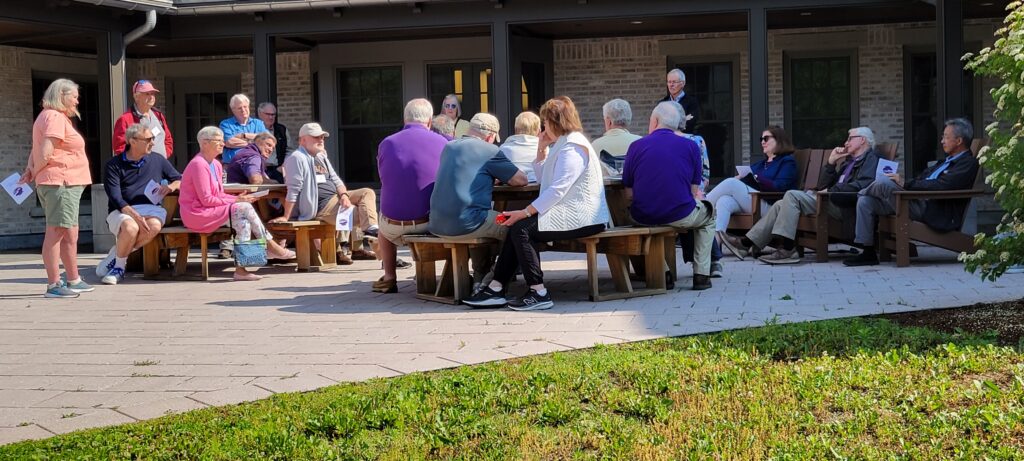
On Sunday, on the sunny terrace at headquarters, Mark Donavan, standing in for Clint Wilkins, who at the last minute couldn’t attend the reunion, led a Quaker-style service of remembrance for the classmates we have lost. The weekend couldn’t help but reinforce the stone-lucky joy of being alive and together — sustaining friends — to celebrate our 55th reunion.
The reunion would never have been so successful without the leadership and light touch of Mark Donavan, Bob Heiss and Mike Herlihy. Early on, with help from Larry Levien, they scored a coup: our own headquarters, rather than being sequestered in Dodd House with other post-50th-reunioners. Then they finessed the headquarters upgrade from Tyler House to St. Anthony Hall/the Center for Development Economics, where we could live large. Alexander Caskey deserves a shout-out for navigating our media so classmates could beam-in.
At every point the college’s reunion staffers Sean McGrath and Chris Robare (a veteran of our 50th who unretired to help us again) expertly shepherded our proceedings.
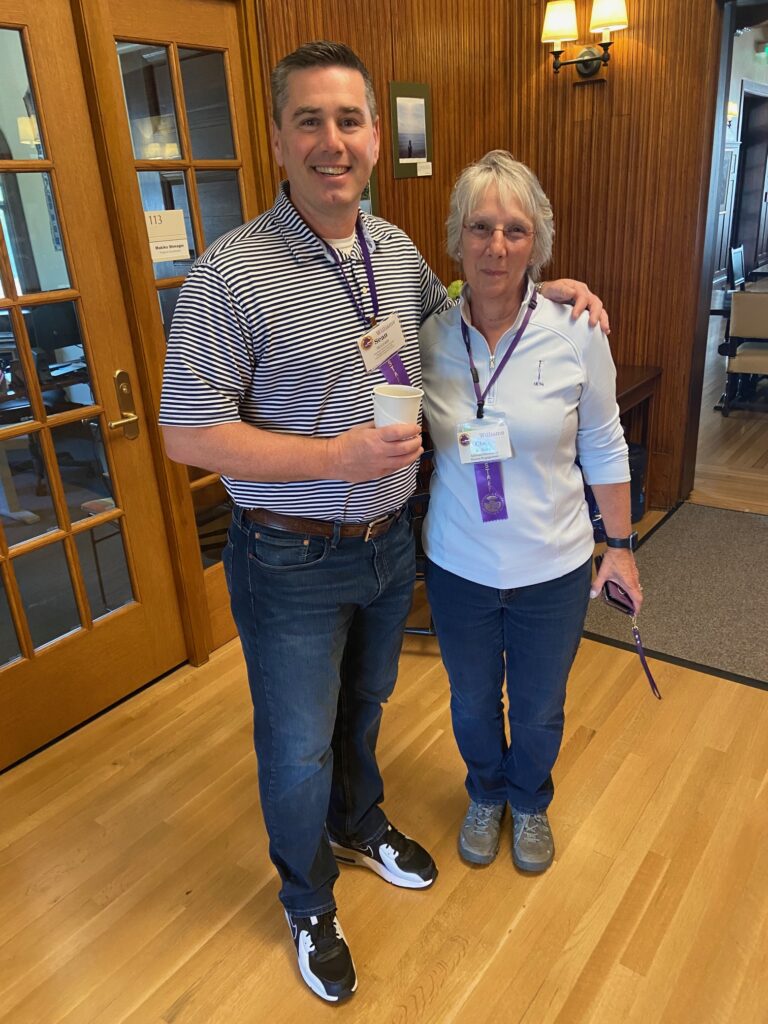
See the full collection of photos, videos, audio, and texts all from our 55th

